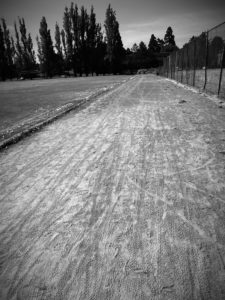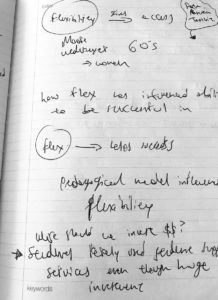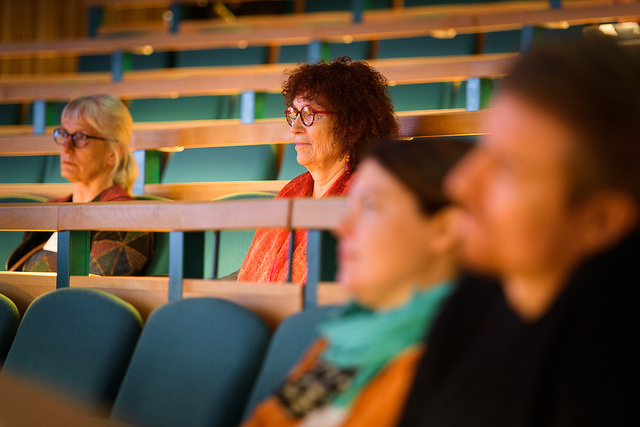The article below was posted on Inside Higher Ed. I’m copying and pasting it here for posterity.
#NotAllEdTech Derails Critical Educational Technology Conversations
Last month, Rolin Moe and I published an essay in EDUCAUSE Review highlighting ideological and sociocultural factors associated with the rise of Educational Technology (hereafter EdTech). Motivated by two responses to our essay, I decided to write this additional piece highlighting an argument/misunderstanding that can often circumvent and derail critical discussions in the field.
The critique, offered by Downes and Kim, counters our underlying premise. They say: Not all educational technology is characterized by technocentric, market-centric, and product-driven ideologies. Downes argues that the way we describe educational technology doesn’t describe him – and by implication many that work in the field. Kim notes that he doesn’t know anyone in the field who thinks and behaves in the ways that aligns with how we describe the rise of EdTech.
Moe parsimoniously summarized these responses as #NotAllEdTech, as a hashtag version of not all educational technology is this way, paralleling usage of the phrase “not all men.”
I will unpack the meaning of #NotAllEdTech here.
#NotAllEdTech posits that not all educational technology is malevolent and not all educational technology represents an insidious attempt at privatizing and automating education. The #NotAllEdTech argument notes that there are many good people in our field. People who care. Entrepreneurs, researchers, and colleagues of many vocations – instructors, instructional designers, directors of digital learning – who are working, in their own way, to improve teaching and learning with technology. Not all educational technology is sinister, atheoretical, ahistorical, and driven by unsavory desires. #NotAllEdTech. Individuals that make this argument seem to want to guard themselves, and others, against being defined by the ideologies we identified in our original paper.
This all makes sense, of course. If it weren’t for the thoughtful, caring, creative, innovative, and justice-oriented people in the field focused on making positive change in education and society, I would have switched careers a long time ago. Moe and I, and countless colleagues, use educational technology toward valued ends, from providing educational opportunities where none have existed before, to providing them in more flexible ways, to re-thinking the ways students learn and instructors teach. Making a meaningful contribution to society is at the core of this multi-faceted and exciting field.
We know that there is good in educational technology. To borrow Downes’s terminology, we know that educational technology can be benign.
But, that’s not the point.
Just because there are many well-intentioned people in the field, just because our essay doesn’t accurately characterize Downes, just because Kim doesn’t “know of ” anyone who thinks of educational technology in the ways we described, it doesn’t mean that educational technology is operating outside of socio-cultural, -economic, and –political forces.
I’m certain that many well-intentioned people were involved in a wide-range of initiatives that ended up being problematic. Many well-intentioned individuals believed in xMOOCs and for-profit online universities as emancipatory. Many well-intentioned individuals write, adopt, and otherwise participate in the operations of the textbook publishing industry despite the exorbitant prices that some publishers charge. Many well-intentioned individuals review for or publish in non-open-access journals and otherwise support the academic publishing industry despite the restrictions the industry places upon knowledge dissemination. Many well-intentioned individuals imagined the aforementioned practices as ways to democratize access, but the presence of well-intentioned individuals did not ensure positive outcomes.
The most pressing problem with the #NotAllEdTech argument though, is that it perpetuates a dangerous counternarrative.
#NotAllEdTech can be a tactic that derails and deflects from discussions of educational technology as a practice that needs deep questioning. #NotAllEdTech could, perhaps inadvertently, redirect attention on the optimism surrounding educational technology, ignoring the broader landscape around which educational technology operates. It might also create a false binary: the heroes and good guys of EdTech vis-à-vis the bad ones (e.g., for-profits, large companies, and so on). Most importantly, such a binary might imply that those on the good side are somehow shielded by outside forces (some of which, such as pressures to rethink our practices, might in fact be very useful).
What I fear, and hope to avoid, is a world where conversations about educational technology focus solely on individuals (e.g., those who use the technology, create the technology, etc.), while avoiding criticisms of educational technology as an overly optimistic practice shaped by societal trends. It’s easy to shift the focus on individuals. It’s easy to blame teachers for not using technology in participatory ways, faculty for not employing more progressive digital pedagogies, and researchers for not publishing in open access venues. But such blame, such a “pull yourself up by your bootstraps” approach, ignores the unequal distribution of power in our social systems and ignores sociocultural and sociopolitical constraints that individuals face. Teachers might face testing regimes that favor certain (poor) pedagogies. Researchers might face institutional policies or disciplinary norms that favor publishing in certain (closed) journals. Using a parallel example, it’s easy (and tempting) to claim that Uber drivers enjoy opportunities to supplement their income, work at their leisure, and make use of idle resources (i.e. their cars), and easy to avoid investigations of the broader social trends surrounding the gig economy.
Have we had successes using educational technology to re-imagine pedagogical approaches, expand flexibility, reduce costs, improve outcomes, and escalate access? Of course we have. And the future is bright. But, if we keep ignoring the ways that educational technology is a symptom of powerful forces, such as our changing economy[1], outside of the control of any single well-intentioned individual we might find ourselves supporting systems and practices that are in conflict with the positive societal ideals that we are aspiring towards.
Through such conversations, our field becomes more vibrant, critical, and reflective. And, for that, despite our disagreements, I’d like to thank Downes and Kim.










